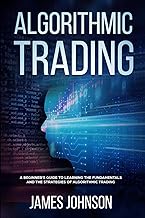Summary of "Advanced Algo Trading Series | Episode 3: Connecting Your Algo With Excel | Part 2"
Summary of “Advanced Algo Trading Series | Episode 3: Connecting Your Algo With Excel | Part 2”
Technological Concepts & Product Features Covered
-
Live Option Chain Integration with Excel - Demonstrated how to connect a tick-by-tick option chain feed to Excel using Python. - Used the
[Excel Wings](https://www.amazon.com/dp/1492081000?tag=dtdgstoreid08-20)(xlwings) library to send data frames (entire option chains) to Excel and keep them auto-updating every few seconds. - Implemented formatting in Excel (e.g., bold headers, blue coloring) and froze the top row for better visibility. - Limited the option chain display to a range around the at-the-money strikes (e.g., 15 strikes above and below) to optimize performance and relevance. - Incorporated rate limiting by adding a 2-second sleep delay between requests to avoid API restrictions. - Provided tips on managing Excel sheets, such as clearing data ranges automatically to avoid manual cleanup. -
Order Placement via Excel - Discussed the possibility of embedding buy/sell buttons or order placement logic directly within Excel sheets. - Highlighted that Excel can be used not only for viewing option chains but also for sending orders programmatically. - Encouraged users to ask implementation questions on the “Mate for Trade” website.
-
Telegram Integration for Algo Alerts - Explained how to integrate Telegram messaging with the algo to receive real-time alerts for order placement, modification, cancellations, entries, exits, and position updates. - Detailed the process to create a Telegram Bot (referred to as “BOT”):
- Using Telegram’s BotFather to create a bot and obtain a Bot API token.
- Obtaining the receiver chat ID by interacting with a Telegram user info bot.
- Showed how to send messages programmatically from Python using the Telegram Bot API by passing the message, chat ID, and bot token.
- Demonstrated formatting messages using Python f-strings for dynamic content such as traded stock names, RSI values, quantities, stop loss, and order IDs.
- Emphasized the importance of keeping API tokens and chat IDs confidential.
-
Automation and Code Debugging - Walked through debugging issues like code not stopping on buy signals due to unsaved files or logic errors. - Automated clearing of Excel ranges before updating new data to avoid manual cleanup. - Explained how the algo avoids firing back-to-back orders for the same signals by managing state internally.
-
Algo Deployment and Architecture - Described the final deployment setup:
- Algo runs on a remote server located in Mumbai (close to the exchange’s data center).
- Telegram alerts are received on the trader’s mobile device anywhere (e.g., Pondicherry).
- Order placement happens on the server, while the trader monitors alerts remotely.
- Highlighted that the foundational structure of the algo (Excel integration, Telegram alerts, order management) remains consistent across different strategies; only entry/exit conditions vary.
- Encouraged viewers that after completing the series, their algo will be fully automated, eliminating manual trading.
Key Guides / Tutorials Included
- Step-by-step tutorial on connecting live option chain data to Excel with continuous updates.
- Guide on creating and integrating Telegram bots for alert messaging.
- Instructions on formatting and managing Excel sheets programmatically.
- Debugging and improving algo code with practical examples.
- Overview of deploying algos on remote servers with live monitoring via Telegram.
Main Speaker / Source
The primary speaker is Prashaas, who provides a detailed walkthrough of the coding, integration, and deployment process for algorithmic trading using Python, Excel, and Telegram.
Category
Technology
Share this summary
Featured Products



